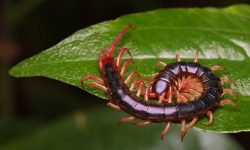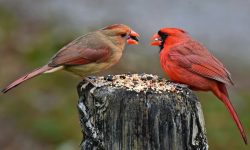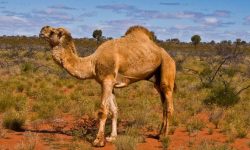Slugs are soft-bodied, slow-moving creatures found in forests, gardens, farmlands and damp natural habitats across the world. Their feeding habits often go unnoticed because they forage mostly at night or during rainy periods. Understanding what slugs eat helps explain their ecological value, their impact on plant communities and why they thrive in moist environments where other animals might struggle. Slugs play a vital role in breaking down organic matter, recycling nutrients and shaping soil health.
Despite their gentle appearance, slugs are highly adaptable feeders with surprisingly varied diets. They use a tongue-like organ called a radula—covered in tiny, gritty teeth—to scrape food, chew soft tissues and break down decaying material. Their diet changes depending on season, moisture levels and the plants or organisms available around them. This flexibility allows them to survive in diverse habitats, from humid forests and shaded woodlands to backyard gardens and compost piles.
This guide explores 20 foods slugs consume in the wild, offering a closer look at the natural diet of these misunderstood creatures. Their food choices reveal much about their behavior, survival strategies and the ecosystems they help support.
Understanding the Slug Diet

Slugs are primarily detritivores and herbivores, meaning they feed on decaying organic matter as well as living plants. Their role in ecosystems is crucial because they help break down plant debris, speed up decomposition and enrich the soil with nutrients. At the same time, slugs can become garden pests when their food sources overlap with young seedlings or tender ornamental plants.
Moisture is essential for slug feeding. Their bodies lose water quickly, so they eat most actively at night, during foggy mornings or after rainfall when food is soft and easier to chew. Their mucus trails help them move across rough surfaces and locate food sources repeatedly. Slugs also possess a strong sense of smell, enabling them to detect fresh plant growth or decomposing material from surprising distances.
While many people assume slugs feed only on leaves, their diet extends far beyond that. They consume fungi, algae, carrion, fruit, seedlings and even other slugs under certain conditions. This versatility helps them survive seasonal shortages and shifts in their environment. Understanding their diet provides insight into both their ecological importance and their impact on human landscapes.
20 Foods Slugs Consume in the Wild
1. Decaying Leaves
Decaying leaves are one of the most important food sources for slugs. As leaves break down on the forest floor, they soften and become easier to scrape with the slug’s radula. Slugs help complete the decomposition process by consuming the softened plant material.
This feeding behavior returns nutrients to the soil and supports overall forest health. Slugs especially target leaf litter in shaded, humid areas where moisture keeps the leaves soft. They often burrow beneath piles of leaves during the day to stay cool and feed at night when conditions are most favorable.
Decaying leaves provide steady nourishment year-round and remain one of the most reliable food sources in most environments.
2. Fresh Plant Shoots
New plant shoots are soft, tender and full of moisture, making them attractive to slugs. These young growths are easier to chew than mature leaves and offer rich nutrients in compact form.
Slugs often feed on shoots in gardens or natural meadows during spring. Their ability to sense the chemical signals from new growth helps them locate these tender foods quickly. Shoots are especially vulnerable during early growth stages, making them prime targets.
Because fresh shoots appear during rainy seasons, they align perfectly with the moisture slugs need to feed comfortably.
3. Seedlings
Slugs commonly consume seedlings in both natural habitats and gardens. Seedlings have thin stems and delicate leaves, providing easy meals for slugs that cannot chew harder plant tissues.
In forests, slugs may influence which plants regenerate by feeding on certain seedlings more than others. Their selective feeding shapes plant communities in subtle but lasting ways. Gardeners often notice slug damage on seedlings early in the growing season.
Seedlings make ideal food for young or small slugs still developing their feeding strength.
4. Mushrooms
Mushrooms are a major part of the slug’s natural diet. These fungi are rich in moisture, soft enough to chew and full of nutrients slugs need. Slugs often gather near fallen logs, mossy patches or damp forest floors where mushrooms thrive.
Their feeding on mushrooms helps break down fungal bodies and stimulates nutrient cycling. Slugs even consume poisonous varieties that many animals avoid, thanks to their unique digestive biology.
During wet seasons, mushrooms provide abundant food that can support large slug populations.
5. Fungi and Mycelium
Beyond mushrooms, slugs also consume underground fungal networks known as mycelium. These thread-like structures spread through soil and decaying wood, forming an essential part of forest ecosystems.
Slugs nibble on exposed patches of mycelium near decaying logs or newly disturbed soil. This food provides nutrients while helping maintain the balance of fungal growth in forest floors.
Fungi-based diets benefit slugs during winter or cooler seasons when leaves and shoots are less plentiful.
6. Algae
Algae growing on rocks, logs or moist soil surfaces serves as a soft, moisture-rich food source for slugs. They scrape algae with their radula, leaving behind clean, smooth patches.
Algae consumption is common near streams, ponds and shaded garden corners where humidity supports its growth. Young slugs especially depend on algae due to its soft texture.
Because algae thrives year-round in wet environments, it supports slugs during periods when plant-based foods are scarce.
7. Lichen
Lichen, a symbiotic blend of fungi and algae, is another food slugs eat in the wild. Lichen grows on tree bark, rocks and old logs, making it accessible in shaded, damp habitats.
Slugs benefit from its mineral content and hydration. They scrape lichen carefully, consuming its outer layers while leaving the harder base intact. This selective feeding allows lichen to regrow over time.
Lichen becomes an important food in older forests where other soft vegetation is limited.
8. Fruit (Fallen and Soft)
Slugs eagerly consume fallen fruits such as berries, apples, figs or plums that have softened on the ground. Rotting fruits contain natural sugars and moisture—two things slugs seek out.
In forests, slugs play a role in breaking down fruit remains, contributing to nutrient recycling. Gardeners often find slugs clustered around dropped fruits after heavy rain.
Slugs also consume small wild fruits that soften naturally as they ripen.
9. Vegetables (Wild or Garden)
Soft vegetables like lettuce, cabbage leaves, cucumbers or squash blossoms attract slugs when they grow wild or in gardens. Slugs prefer vegetables with high moisture and tender tissue.
In the wild, slugs target wild greens and soft-stemmed plants that mimic garden vegetables. Their feeding helps naturally prune weak plant parts, though in gardens the damage can be more noticeable.
Vegetable matter offers hydration during warm seasons when leafy foods may dry out quickly.
10. Grasses (Young Growth)
While slugs typically avoid tough grass blades, they do consume young, soft grass shoots. These shoots appear after rain, offering moisture-packed food.
Slugs scrape the tender tips and avoid the fibrous stems. Grass shoots often grow in abundance after storms, giving slugs plenty of places to forage at night.
Their feeding on grasses is subtle but contributes to natural trimming in meadows and lawn edges.
11. Flower Petals
Flower petals are delicate, moist and fragrant—making them attractive snacks for slugs. Wild blooms such as dandelions, daisies and woodland flowers often show slug bite marks.
Slugs feed gently along the petal edges, avoiding thicker centers that require more effort. Flower petals add variety and trace nutrients to the slug’s diet.
During spring, flowers become an easy and abundant food source.
12. Flower Buds
Slugs also consume unopened flower buds, particularly in wetter areas of gardens or forests. Buds are packed with nutrients and moisture, making them richer than mature petals.
They chew carefully through the protective bud layers to access the softer interior. This behavior occurs mostly during night feeding sessions.
Flower bud consumption is more common during seasons of rapid plant growth.
13. Decaying Wood
Slugs eat decaying wood as part of their detritivore role. As wood breaks down, it softens and becomes accessible to slugs that scrape the surface to consume nutrients.
They often hide beneath logs during the day and feed on softened sections at night. Moist, shaded logs attract both slugs and fungi, creating feeding hotspots.
Decaying wood supports slugs in older forests where nutrient cycles rely heavily on decomposers.
14. Compost Material
In natural settings, compost-like areas of decomposing plant matter attract slugs. Leaf piles, rotting plants and damp organic waste provide abundant soft food.
These environments mimic natural forest floors. Slugs thrive here because the decaying material stays moist and nutrient-rich.
Their feeding helps accelerate decomposition, turning waste into fertile soil.
15. Carrion (Rare but Occasional)
Slugs occasionally feed on carrion—dead insects, worms or small animals. While not a primary food source, carrion provides protein and moisture when plant foods are scarce.
This behavior is more common in damp forests where decomposing animals may remain hidden under leaves. Slugs nibble around softened tissues rather than large chunks.
Carrion consumption supports their survival during challenging seasons.
16. Worms (Injured or Dead)
Slugs may consume injured or dead earthworms found on the soil surface after rain. These worms offer protein and hydration.
Slugs do not hunt worms but opportunistically feed on them when available. Their radula helps them break down the soft tissues easily.
This occasional food source adds variety to their diet.
17. Insects (Soft-Bodied or Decaying)
Slugs sometimes consume small decaying insects such as fallen beetles, fly larvae or dead ants. Soft-bodied insects are easier for them to digest.
These insects provide extra nutrition, especially protein, which helps slugs regulate growth and reproduction. Slugs participate in natural cleanup by feeding on these organisms.
This behavior is common in compost piles and forest floors rich in insect activity.
18. Seeds (Soft or Germinating)
Germinating seeds and soft seeds become food for slugs during moist conditions. Seeds that have absorbed water or begun sprouting are easier for slugs to chew.
Slugs scrape the outer layers to access soft inner portions. This behavior can affect plant regeneration in forests and gardens.
Seed consumption increases during wet seasons when seeds swell naturally.
19. Moss
Moss provides hydration and mild nutrients for slugs. They feed on soft moss layers growing on rocks, logs or moist soil.
Moss retains water exceptionally well, making it appealing during dry periods. Slugs scrape small portions without damaging the entire moss patch.
This food source is common in shaded forests with high humidity.
20. Other Slugs (Rare Cannibalism)
In rare situations, slugs may consume injured or dead slugs. This typically occurs when other food sources are extremely scarce or when slugs find decaying bodies already softened.
Cannibalism provides high protein but is not common in healthy environments. It is more likely to occur in confined or resource-poor areas.
This behavior highlights the slug’s adaptability in difficult conditions.
FAQs About What Do Slugs Eat
What do slugs eat most often?
Mostly decaying leaves, soft plant shoots, fungi and tender vegetation.
Do slugs eat living plants?
Yes, they prefer young shoots and seedlings when available.
Do slugs eat fruit?
They eat fallen or softened fruit in forests and gardens.
Are slugs herbivores?
Primarily, but they also consume fungi, algae and decaying animals.
Do slugs drink water?
They absorb moisture from food and surroundings rather than drinking directly.
When do slugs eat?
Mostly at night or during cool, wet weather.
Do slugs eat insects?
Occasionally, especially soft-bodied or decaying insects.
Do slugs play a role in ecosystems?
Yes. They break down organic matter and support nutrient cycling.
Can slugs digest tough food?
They prefer soft, moist material; tough food is difficult for them.
Are slugs harmful to plants?
They can damage seedlings but also help decompose organic matter.
Final Thoughts
Slugs might move slowly, but their diet reflects an active role in maintaining the health of forest floors, gardens and natural ecosystems. By understanding what slugs eat, we discover how their feeding habits support decomposition, nutrient cycling and plant regeneration. From decaying leaves and fungi to soft shoots, fruits and occasional insects, slugs adapt their diet to whatever their moist surroundings provide. These silent night foragers show how even the smallest creatures shape the world beneath our feet.






